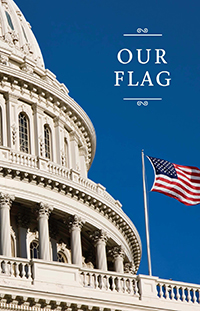Published: June 11, 2021
History of Flag Day and fun facts about the U.S. flag

The History of Flag Day
- June 14th is observed as Flag Day each year because on June 14, 1777, the Second Continental Congress adopted the Stars and Stripes for the flag of the United States.
- The first national observance of Flag Day took place 100 years after the original resolution on June 14, 1877.
- President Woodrow Wilson issued a 1916 proclamation for the national observance of Flag Day on the 14th of June. Read the Presidential Proclamation as printed in the June 3, 1916, issue of the Congressional Record.
- H.J. Res 170 (81st Congress) was signed into law by President Truman on August 3, 1949 (see the August 9, 1949 issue of the Congressional Record). This made Flag Day a permanent observance you as you can see in 36 U.S.C. 110.
This history of Flag Day is recorded in Senate Document 109-18, Our Flag, which briefly describes the history of the flag and sets forth the practices and observances appropriate to its display. You'll find out much more about the flag in this publication including these fun facts:
- Flag proportions were designated by President Eisenhower's August 21,1959, Executive Order.
- A flag should not be stored wet which can cause permanent creases.
- If a flagpole is 40 feet, the flag dimensions should be 6 by 10 feet.
- The custom of flying flags 24 hours a day over the east and west fronts of the Capitol building started during World War I.
- The original “Star-Spangled Banner,” was 30 by 42 feet and made by Mary Pickersgill in her home in Baltimore, Maryland from 1807 to 1857.
Additional Resources
- 4 U.S.C. 1 - THE FLAG
- Purchase a copy of “Our Flag” from the U.S. Government Publishing Office’s Bookstore.
- Check out Ben’s Guide, to learn more about the history of the American flag.
- Read the Smithsonian’s Facts about the United States Flag.
- Explore the Smithsonian’s interactive flag to discover more about its creation, history and preservation.
- Read about, and find out how to tour the National Park Service’s Star-Spangled Banner House in Baltimore, Maryland.
About Featured Content Articles - This series of articles aims to highlight content available in govinfo related to various national observances, commemorations, anniversaries and more. See more featured content articles.